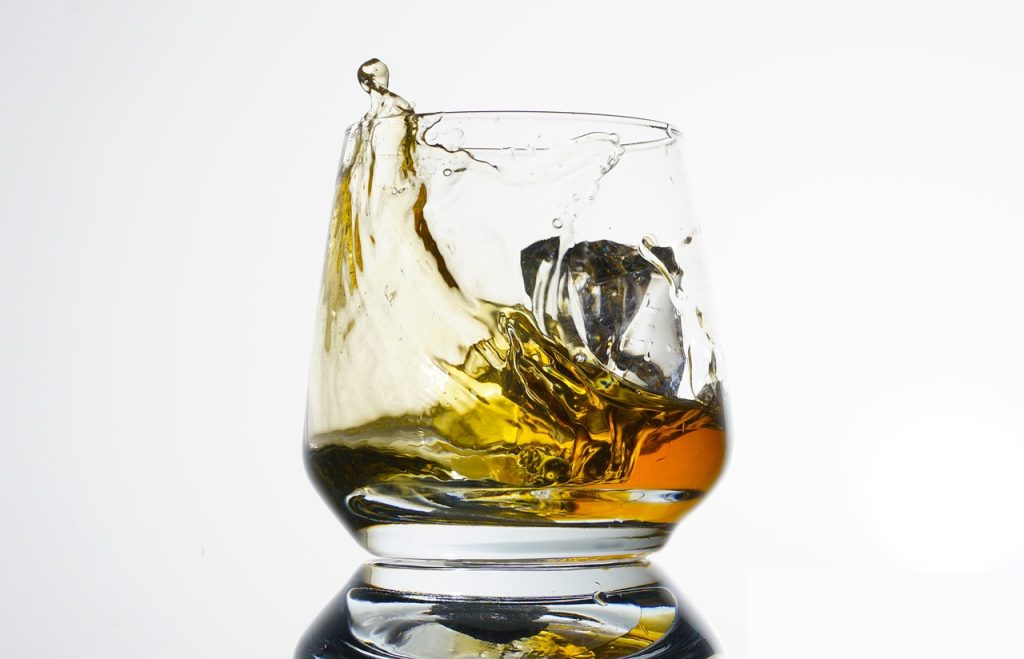Do you want to learn how to sip like a pro and master the art of tasting distilled elegance? This is your chance. Our guide to the art of whiskey appreciation will show you the way.
1. Understanding the Basics of Distillation
All whiskeys are made from grain, either a single type or a mixture, such as barley, corn, rye, or wheat. These are ground and then cooked with hot water to form a “mash”, to which yeast is added. The yeast activates the fermentation process in the mixture is now known as a “wash”.
As the wash is heated in the still, the alcohol evaporates. These vapours are gathered, cooled, and condensed. With each distillation, impurities are removed to produce more concentrated alcohol. Once the whiskey is distilled, it is matured in wooden barrels to further develop its colour and flavour.
So, what does whiskey taste like? It’s a simple question but with a complex answer. Many factors contribute to the taste of whiskey. The grains used, the distillation process, and even the type of wood used for the maturation barrels all have a role to play.
Indeed, the distillation process not only separates the alcohol but also plays a significant role in shaping its character and flavour. The still’s shape and size, rate of distillation, and even the number of distillation runs play their part. Jameson whiskey, for example, is triple-distilled using both pot and column stills.
2. The Importance of Glassware in Tasting
Everything from the grains used to the distillation process and the wooden maturation casks influence a whiskey’s flavour and aroma. Especially when those casks were used for aged bourbon or sherry before being filled with the newly distilled whiskey.
The result may have a sweetness with vanilla or toasted oak notes. It may even have a hint of fruitiness or spiciness. Woody or smoky undertones are also common. How one experiences a whiskey’s flavour is very subjective. And the vessel that carries it, can heighten the aroma and taste experience.
The presentation is key. Different glass shapes enhance or detract from the tasting experience, which is why there are specific glasses suited for whiskey-tasting. A tulip-shaped Glencairn glass will concentrate the aroma, yet allow ample room for swirling the whiskey.
3. The Art of Observing Color and Clarity
Different types of oak barrels, and the time spent in them, will influence the colour of a whiskey. A light, amber hue is typical of younger whiskey, while darker hues are typical of more aged whiskeys. And the colour is usually a good indicator of flavour, too.
Lighter hues often go hand-in-hand with a lighter flavour, with undertones of vanilla. Meanwhile, dark, rich hues denote more complex flavour profiles, with hints of caramel. To better observe the hue and clarity, hold the glass to the light and gently swirl the contents.
4. Nosing: Unlocking Aromatic Layers
Nosing a whisky allows you to unlock the aromatic layers and capture all their complexity. Bring the whiskey glass to your nose and take a deliberate sniff. But not too deeply, you don’t want to overwhelm your senses. Just enough to fully appreciate the aroma.
Close your eyes and take your time to explore the tones and undertones of the scent profile. What comes to mind? Can you identify any familiar scents, like sweetness, or fruitiness? Perhaps a more earthy smell of peat or oak will be your experience. As with taste, the smell of whiskey can be open to interpretation.
5. Sipping: Techniques for Maximising Flavor
When you learn to sip whiskey the right way, you’ll savour it and appreciate all the layers of flavour.
To start, take a small sip, but don’t swallow it too quickly. Swish the whiskey gently around your mouth, before you swallow it. You’ll feel an intense but pleasant heat, and thai will linger after you swallow. But you’ll be accustomed to it by the second sip.
Take another sip, and do the same as for the first, but allow the whiskey to roll over your tongue. It is now, after that first flush of warmth, that you will appreciate its more subtle notes of flavour.
Try to identify different flavours. Is there any sweetness or fruitiness? What about a spicy or woodsy taste? Notice the texture, too. Is it light or full-bodied, smooth or slick? Do any sensations linger after swallowing? New flavours may seem to emerge and develop into a distinctive aftertaste.
6. Pairing Whiskey with Food: Elevating the Experience
You’ve heard of pairing wines with meals. But did you know that you can do the same with whiskey?
When pairing whiskey with food, there are two approaches. You could do a complementary pairing, where the whiskey’s flavour profile is similar to that of the meal. Alternatively, you could do a contrasting pairing, where the flavours of the whiskey and the food enhance one another, through contrast.
For a complementary pairing, try pairing a whiskey that has sweet, caramel notes with a caramel-type dessert. For a contracting pairing, pair a whiskey that has a smoky, peaty flavour, with a light, creamy dish or cheese.
7. Exploring Different Whiskey Varieties
Don’t worry if you find it difficult to identify and articulate the aromas and flavours of whiskey. Each whiskey is unique, as is your palate. It takes time to develop the olfactory and tasting skills that whiskey connoisseurs rely on.
Compare a variety of whiskies from different regions, with different distillation processes and maturation ranges and you’ll become an expert in no time.
Scotch whiskey, produced in Scotland and primarily made with barley grain, has a distinctive smoky flavour. Rye whiskey is made with a rye or a rye and malt mash. Bourbon, first produced in Kentucky in the U.S., includes a sour mash process.
And these are just some of the unique flavours that await you, as you learn to sip like a pro.



